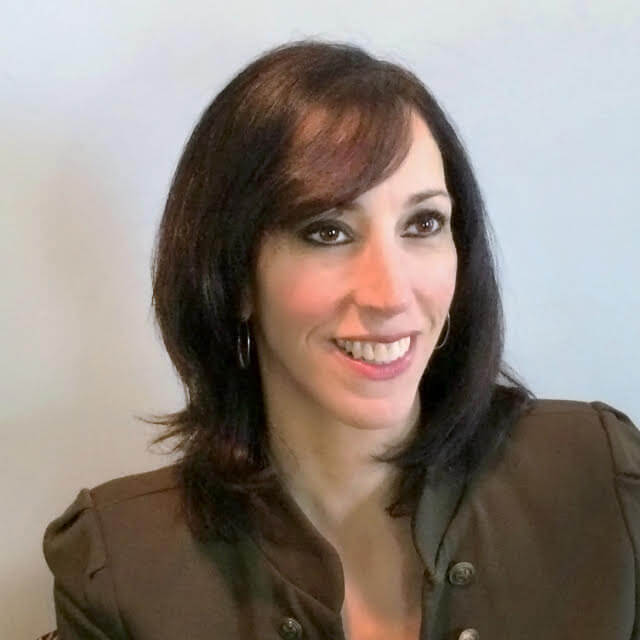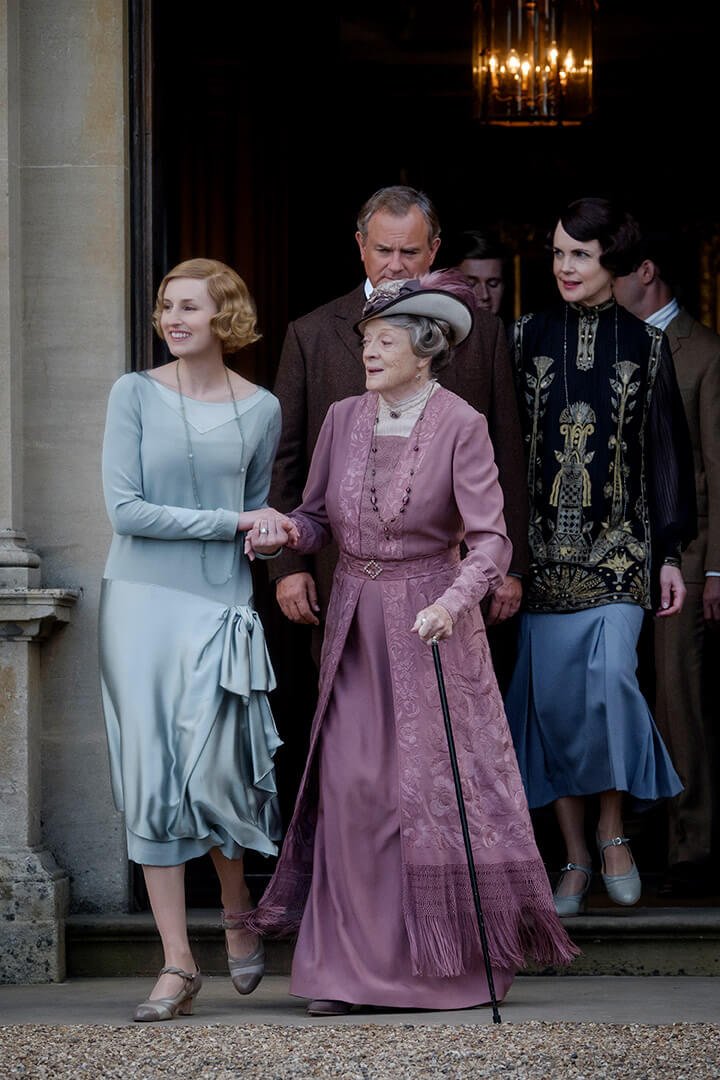- September 20, 2019
- By Sala Levin ’10
As proper as afternoon tea, as stiff as an upper lip and as English as, well, the Queen, “Downton Abbey,” the 2010–15 period drama that set Anglophile hearts aflutter, is back—this time on the big screen.
Those forming an orderly queue at the cinema this weekend “should expect what ‘Downton’ always gives,” said Julie Taddeo, associate research professor of history and co-editor of “Doing History in the Age of Downton Abbey”: “beautiful period details of the fashions, preparations for a lavish event, protocols—that’s one of the reasons people love ‘Downton Abbey,’ right down to which fork you use for which piece of food.”
 Imported from Britain and airing in the U.S. on PBS’s “Masterpiece” series, the show offered viewers loads of English fantasy, from the stunning Highclere Castle that played the home itself to the customs of marriage among the posh set. A soap opera beneath the veneer of aristocratic finery, the show also gave its fans a refresher on some major historical events of the early 20th century. So how will it all play on the silver screen?
Imported from Britain and airing in the U.S. on PBS’s “Masterpiece” series, the show offered viewers loads of English fantasy, from the stunning Highclere Castle that played the home itself to the customs of marriage among the posh set. A soap opera beneath the veneer of aristocratic finery, the show also gave its fans a refresher on some major historical events of the early 20th century. So how will it all play on the silver screen?
When the series ended four years ago, 9.6 million viewers tuned in to PBS to see how creator Julian Fellowes would tie things up. “When we finished, the idea of a film started to form,” Fellowes has said.
The film, which is inspired by real historical events, finds the Crawley family and its servants in a right state as they prepare for a visit from King George and Queen Mary. Bringing together old chums and quarreling rivals, “Downton Abbey” reunites the beloved characters—at least, those who didn’t die in rather unfortunate car accidents or quite tragically in childbirth.
 But how does “Downton Abbey” rate when it comes to historical accuracy? Well, it hasn’t all been a load of codswallop. Taddeo points to the Titanic’s sinking at the beginning of the series as “a warning that the world is about to change.” Storylines that dealt with the impact of World War I also largely stayed true to real events, she said: After cook Mrs. Patmore’s nephew was executed for cowardice, a debate ensued about how to honor him in the Downton memorial—just as happened in Britain at the time.
But how does “Downton Abbey” rate when it comes to historical accuracy? Well, it hasn’t all been a load of codswallop. Taddeo points to the Titanic’s sinking at the beginning of the series as “a warning that the world is about to change.” Storylines that dealt with the impact of World War I also largely stayed true to real events, she said: After cook Mrs. Patmore’s nephew was executed for cowardice, a debate ensued about how to honor him in the Downton memorial—just as happened in Britain at the time.
Still, the series did “clean up class relations—it makes it seem as though the world is that microcosm where all the classes get along and there’s no tension,” said Taddeo. “After World War I, a lot of servants would have left service—it’s a little strange that these servants are always so happy to stay in their place.”
Today, the vision of Britain that “Downton Abbey” presents—with all its high-class conventions—“might be comforting” in the midst of a present-day United Kingdom undergoing political tumult, said Taddeo.
While some scholars have rowed about whether dramatizations like “Downton Abbey” are of value when it comes to teaching history, Taddeo sees their worth.
“That snobbishness forgets that TV is the place where most people get their history,” she said. “While this is not history with a capital H … it does draw people in. It’s making history more accessible.”
Topics
Arts & CultureTags
History